|
Sunday,
9th May; Hebei, Beidaihe
Did I say that rain could be good?
What I should have wished for was
rain in the morning (while I was on the train) and a bright afternoon.
Unfortunately it rained until about 3.30pm.
Undeterred, I went to the Magic Wood at Nandaihe straight from the station. I spent a cold hour or so in a disused building
there sheltering from the torrential rain. Despite the downpour, there were male Yellow-rumped and 3 Taiga Flycatchers and
a Radde's Warbler (302) feeding close to the shelter.
Eventually, I gave up and retreated to Beidaihe
for a change of clothes. At 3.15pm the sky started to brighten in the west (where the weather was coming from). And that's
where I headed back to.
As soon as the rain stopped, there was a large amount of bird activity (at the Beidaihe
side of the Dai river): 2 Richard's Pipit; c40 Little Bunting; 1 Chestnut Bunting (which I got a very bad shot of); several
Eastern Yellow Wagtail (303) and a Russet Sparrow {304) (a bird that seems to be expaning its range
northwards). This was only the second Russet Sparrow I've see in Beidaihe - my first, several years ago, was Beidaihe's first
record, as I understand. Also, a Brown Shrike (305) here (ssp cristatus).
A returned to the the
woods at Nandaihe drew a black, although the fligt shot of a Sharp-tailed Sandpiper is perhaps the photo-highlight of the
day.
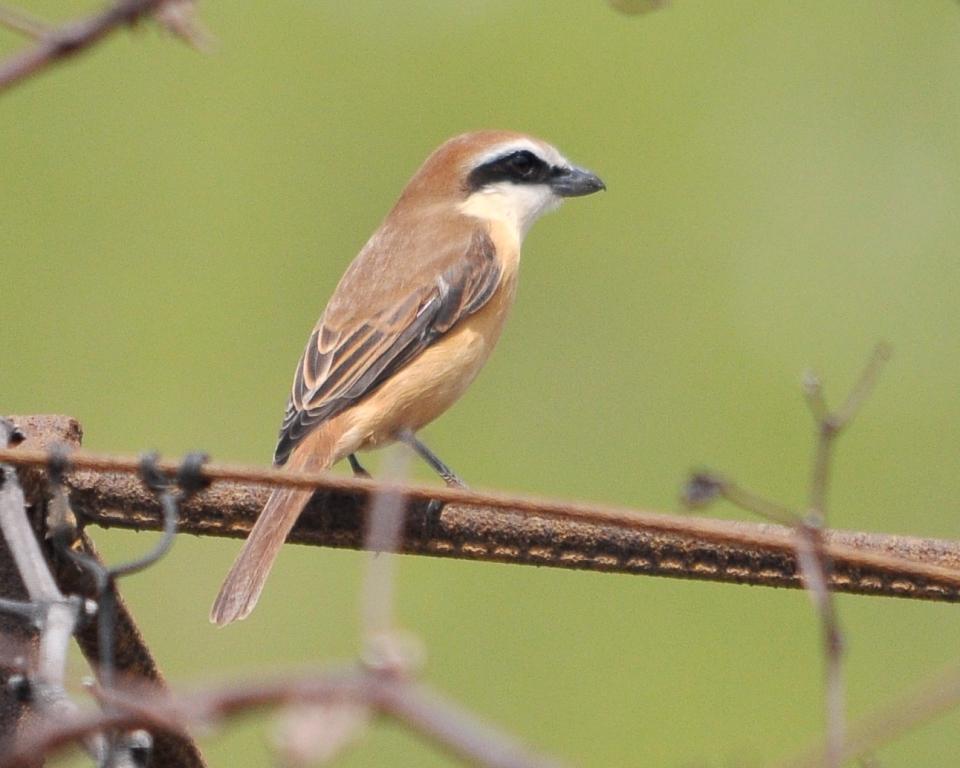

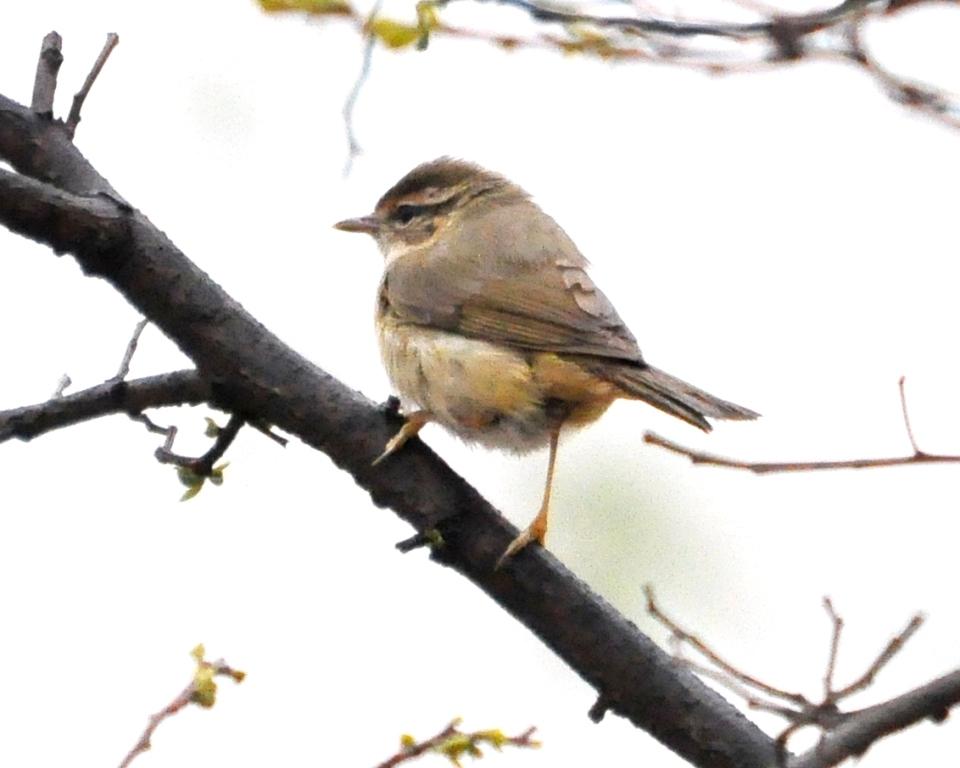
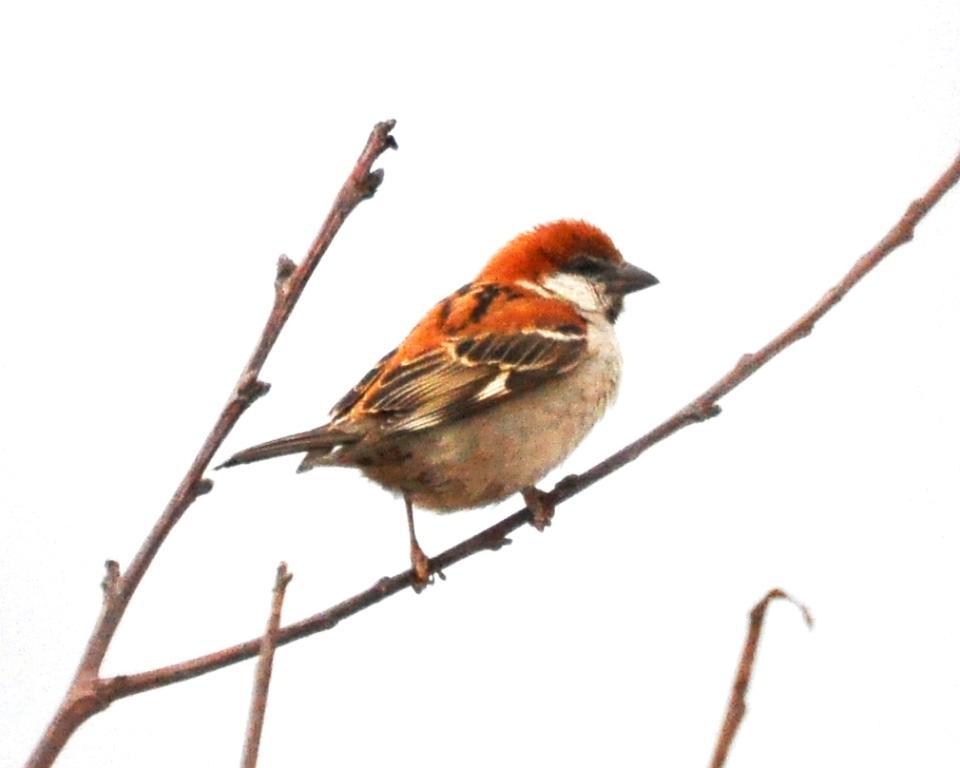
Monday, 10th May;
Hebei, Beidaihe
Sunny all day, but with a blustery east to north-easterly wind. Started the day at the
Dai river from 6.15am. A Black-capped Kingfisher belted through without stopping; as did a Hobby (not in pursuit in case you
were wondering). Managed a better shot of Chestnut Bunting, compared with yesterday, but still not good enough to publish.
I had better luck with a Black Drongo (306), but even then it took me about 20 minutes of chasing before
I got an okay shot. The Citrine Wagtail (307) should have been so much better, but my attempts to get really
close to it failed at the very last moment.
On to the Magic Wood at Nandaihe with fingers well and truly crossed.
But, other than a female Siberian Rubythroat, there was nothing of interest there (not even a phyllosc). Just as I was leaving,
I noticed 4 Pacific Swifts (308) really high, and flying into the wind.
To the Da Po River, where
a Purple Heron (309) gave reasonable views. Also, a Marsh Harrier floated over the reeds for 10 minutes before
deciding to continue its northward migration. Several Chinese Penduline Tits and a few Fan-tailed Warblers here too.
The Lotus Hills was quiet, very quiet. Although a pair of Tristram's Buntings were a nice find; as was a Brown Shrike
near to the south gate.
The wader numbers at the Sandflats were vastly down compared with a week ago.
Greenshanks were the most numerous, with a flock of about 40 or so. Two Lesser Sand Plovers with a Greater Sand Plover
(310) were noteworthy. As were a Gull-billed Tern (311) and a Hobby (312), which
flew in off the sea. Also, Long-toed Stint (313) at Nandaihe.
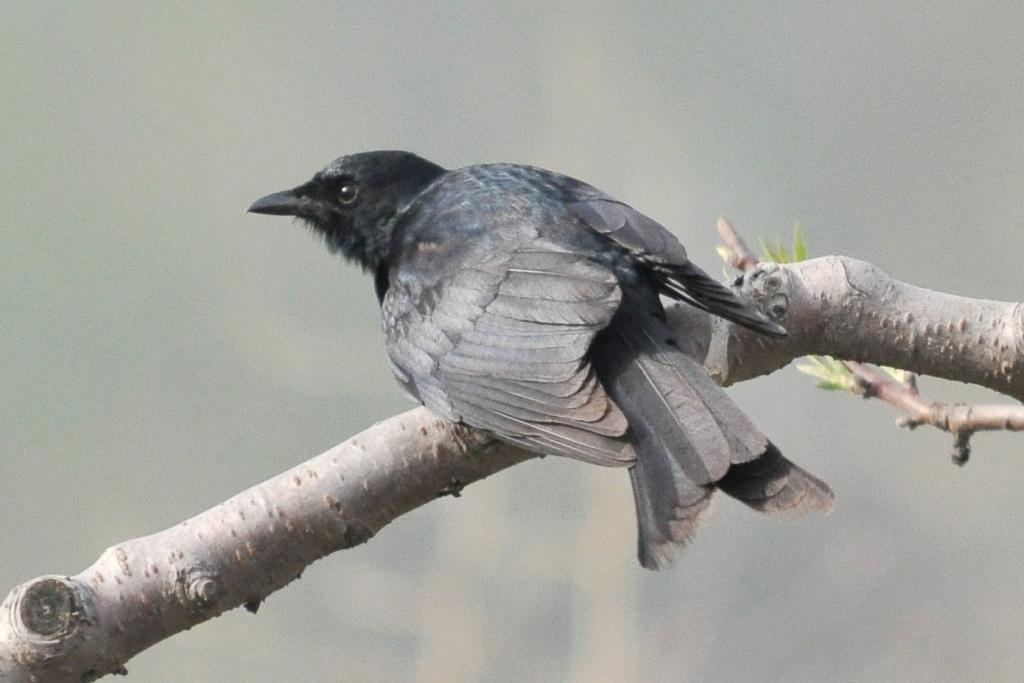
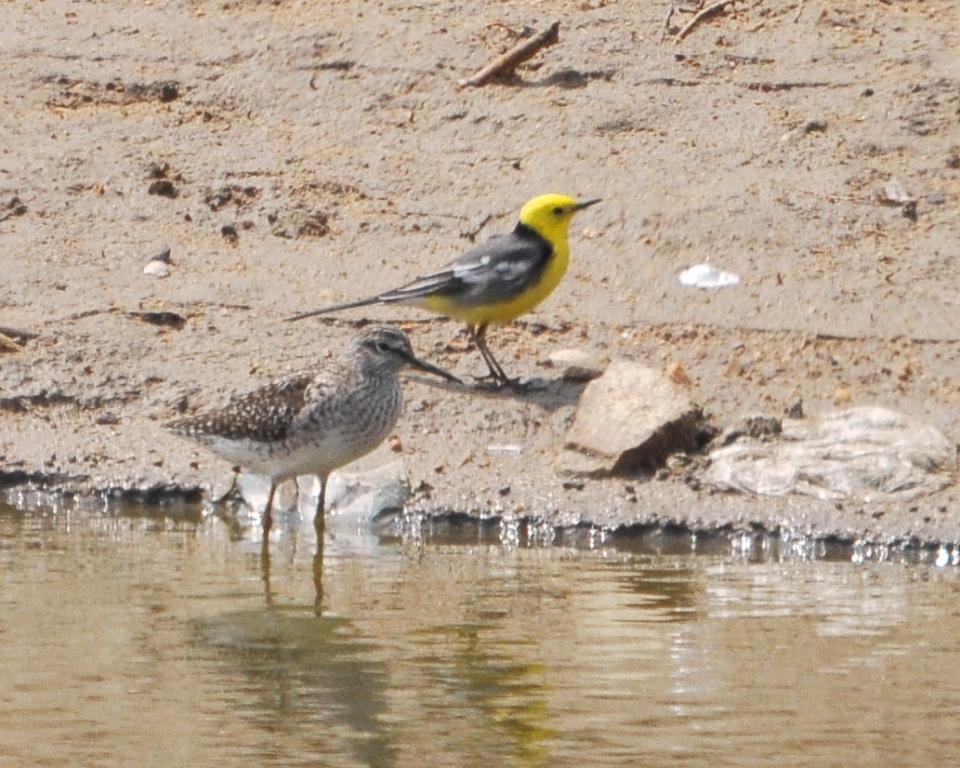
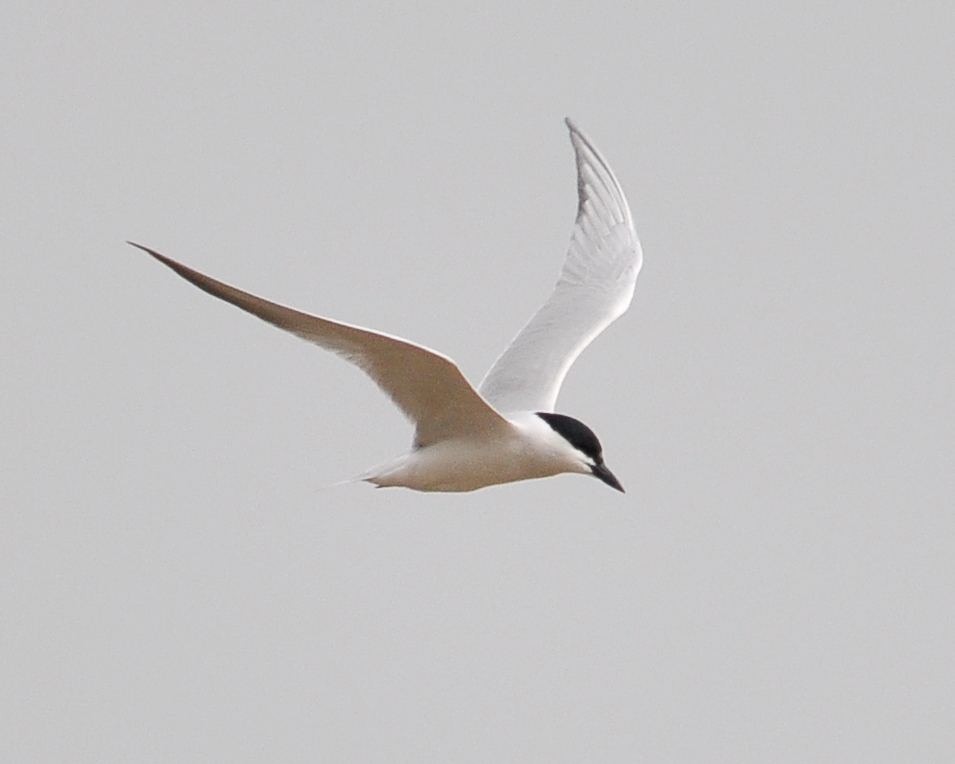
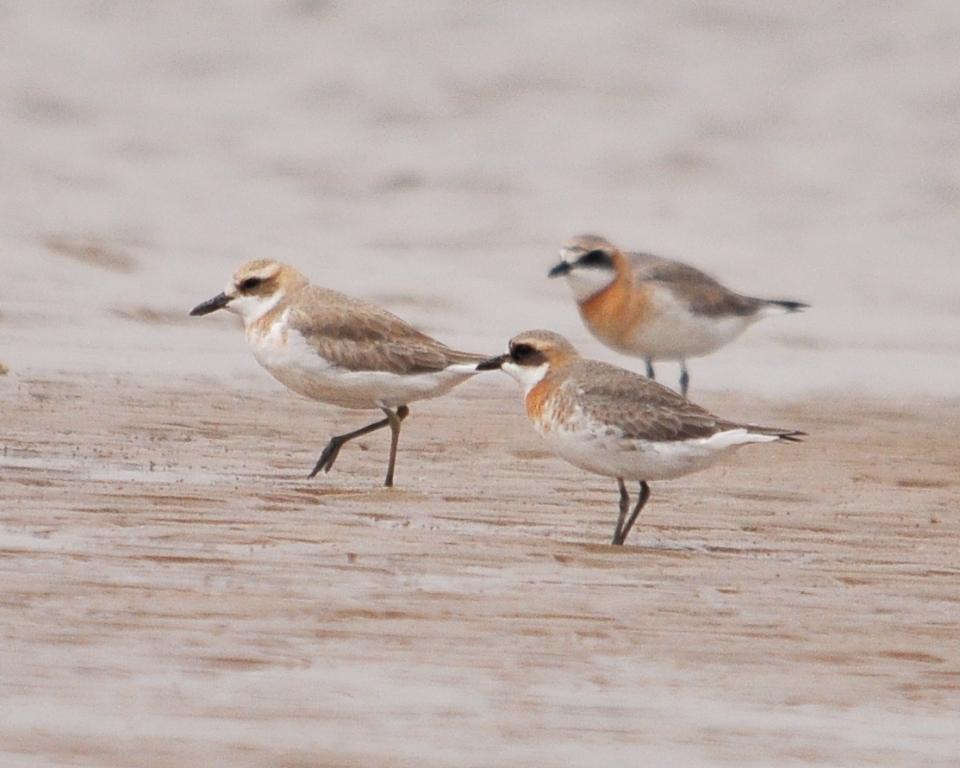

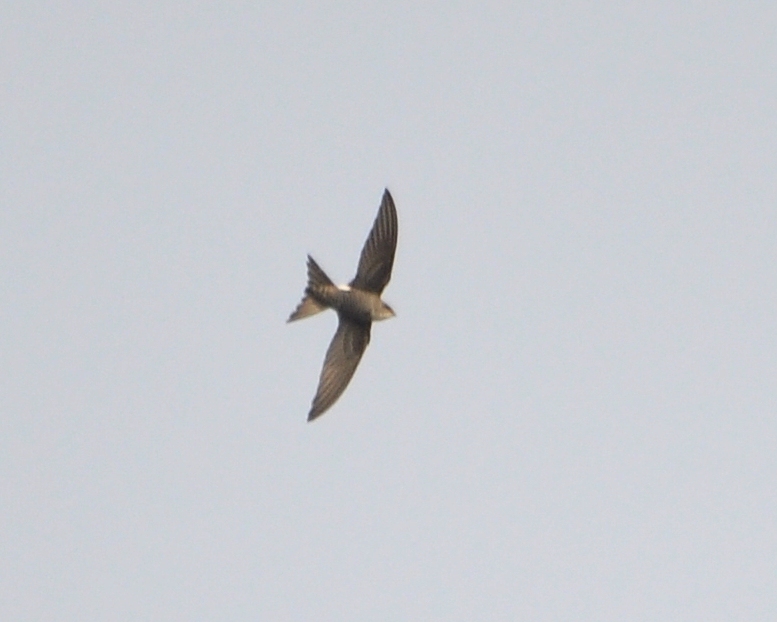
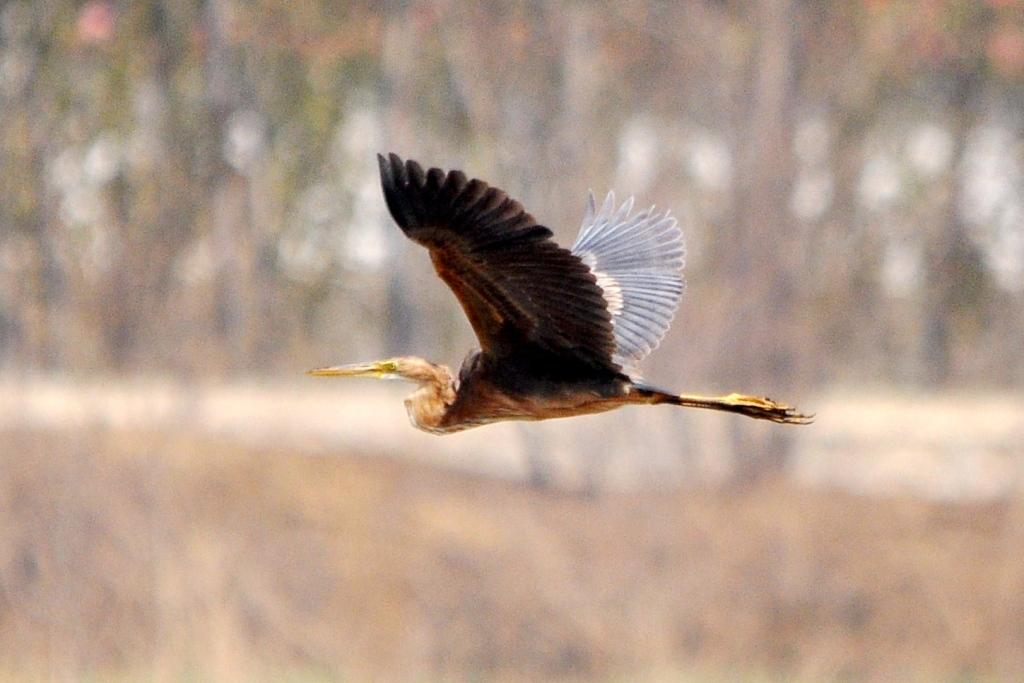
Tuesday, 11th May;
Hebei, Beidaihe to Happy IslandThe plan - or so I had thought - was to go down to Happy Island as early
as possible. But things didn't quite work out that way, and the Magic Birding Bus didn't leave Beidaihe until much
later than I had hoped. I don't see many Ashy Minivets (314), so it was nice to find one singing
away in the trees opposite the International Club at Beidaihe - my first bird of the day at 5.50am. Here, also, was a very
out of range Pere David's Laughingthrush... the first time I've actually seen one in Beidaihe. Alas, its tail looked like
it had been through a shredder, indicating that it had spent quite some time in someone's cage. c40 Pacific
Swifts performed an aerial ballet above the hotel, offering far better photo opportunities than yesterday. A Fan-tailed Warbler (315) sat out to have its photo taken - quite a rare thing for this camera-shy bird
to do (in my experience). 3 Sanderling (316), in various stages of moult, landed on the beach.
A Hobby flew in off the sea. Also 2 Avocets here and a Shelduck. Two birds within a few minutes
of each other were new for the year - a Japanese Sparrowhawk and a Rufous-bellied Woodpecker. But my lens could get nowhere
near either of them. The Magic Wood in Nandaihe held a female Siberian Rubythroat, but not a lot else. The photo of the Richard's Pipit (317) just scapes in to the gallery, even though its a long way away and
blurred by the heat haze, because a) I like the impressionist painting feel of it and b) I've spent far too long trying to
get a shot of this super-wary species and crawling through tall grass is not my idea of a fun day out. The Kestrel
(318) is included on the basis that it's carrying its lunch in its claws.. a bunting perhaps. Which reminds me of
the story of the Kestrel that flew off with Britain's first Blyth's Pipit many years ago (at Languard in Suffolk I seem to
recall)... one wag remarked that it had... er... "dropped in for a Chinese takeaway". On to the paddyfields
in Laoting county (btw did you know that there used to be an Irish pub in Beijing called "Paddy Fields"). I cycled
there one day for a pint or two of Guinness only to find that they'd run out of the stuff (not a clever thing for an Irish
pub to do). In despair, I SMSed a mate to say: "Paddy Fields dried up". Sorry, the sleep depravation
of the past couple of days is causing me to digress. Where was I? Yes, the Laoting paddyfields. A dozen brick red Curlew Sandpipers
there. As well as 8 Little Whimbrels cartwheeling in the sky way off in the distance. The Magic Birding Bus
stopped at a restaurant for lunch. I was very kindly invited to join the group who'd given me a lift down. But, with
respect to people who stop for things like food, I would much rather have a Snickers bar and a few biscuits on the hoof. And
my reward for this hardcore approach... an "Eastern" Common Tern (319) and a jet black Spotted
Redshank no less. Then, at last, we arrived on Happy Island. A place that I first visited 16 years ago (to the
very day!). And, goodness me, what a change in that time. I spotted the blue and yellow wooden boat that used to ferry people
to the island, rotting away in the far corner of the shiny-new marina. I then looked in astonishment at what has replaced
it. A fleet of more than a dozen large, luxury passenger boats. And what boats they are: Leather (sort of) seats, videos,
stewardesses, captains with epaulettes, and... get this... life jackets. I was half expecting to be served a welcome on board
gin and tonic. In twenty minutes we were on the island. In the old days, the voyage took the best part of an hour...
on a good day. And, more often than not, the boat wouldn't be able to land because of a super-low tide (which seem to occur
randomly in this part of the world). There is something significant about 11th May and Happy Island... As well
as 16 years ago to the day I first set foot here it is exactly 8 years ago to the day I saw a Spoon-billed Sandpiper here.
The Spooner was the first for the island in 7 years and, remarkably, I had been on the island in 1995 when a pair
was found but I had refused to twitch them because I had decided that, when in China, I would stick to only finding my own
stuff. So what about the 2002 bird you may well ask. Well, I was doing a round-island walk when I bumped into people performing
cartwheels on the beach, punching the air, twirling their shirts above their heads, and hugging each other. I tried to avoid
them of course, and told them not to tell me what they had seen. But, someone I had known for many years, insisted on sharing
the joy and, while twisting my arm behind my back, forced me to look through his scope. On the basis that I was walking that
way and would have undoubtedly  found the bird myself, I begrugingly opened an eye.  So, what did 11th May 2010 have in store? Well... er... not a lot as it happened: Grey-streaked Flycatcher (320) and... a Sand Martin (321).
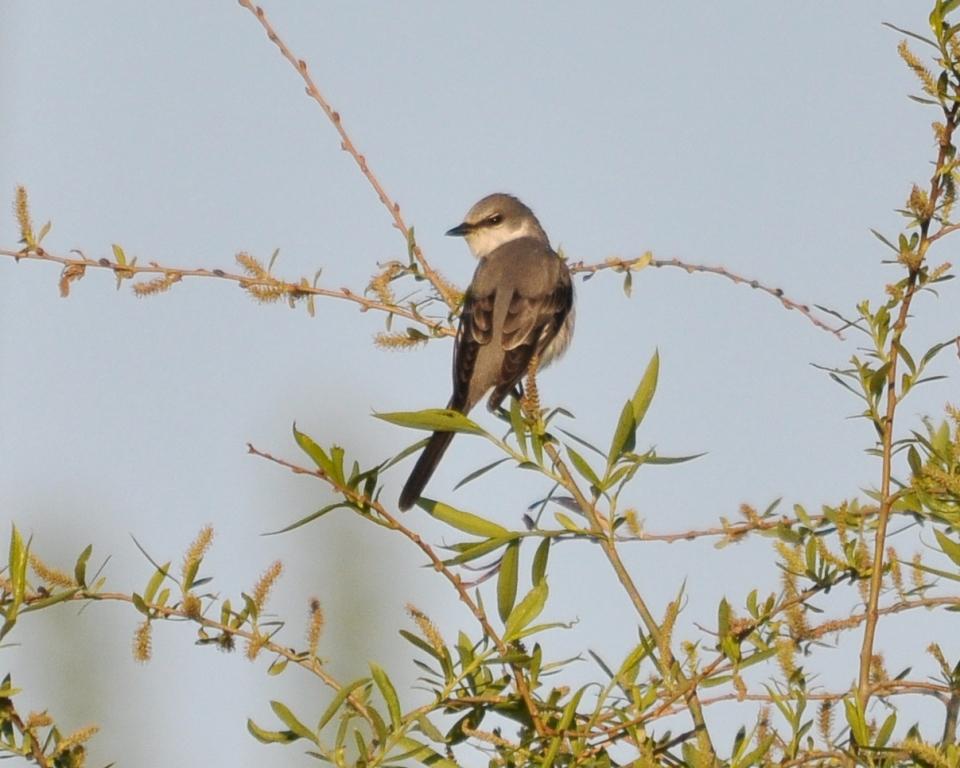
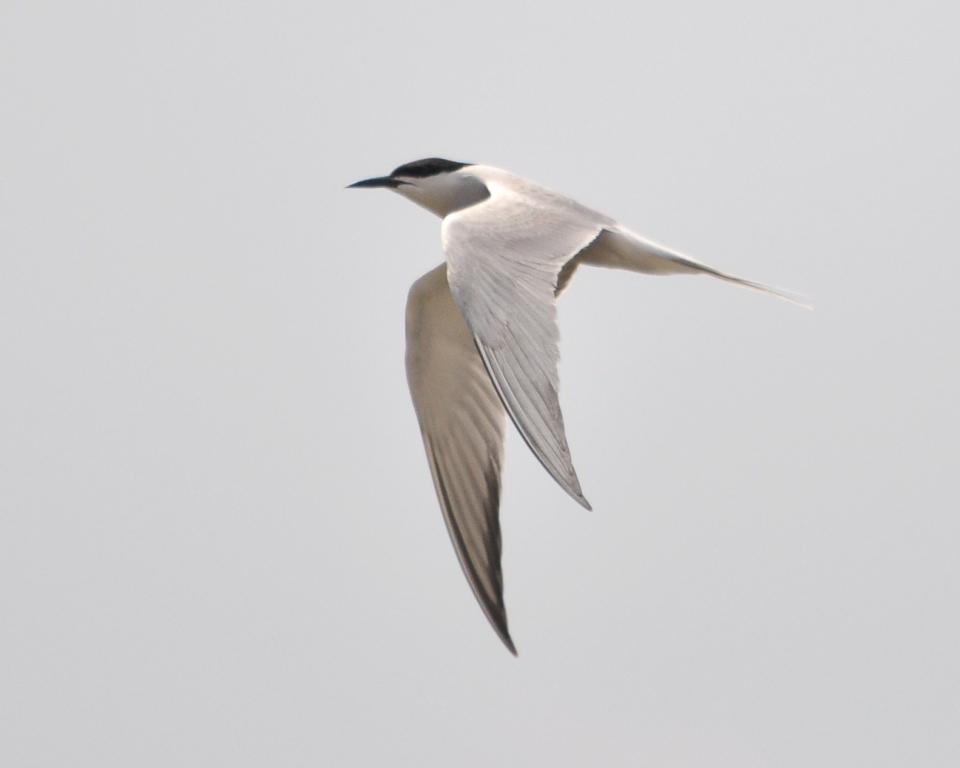
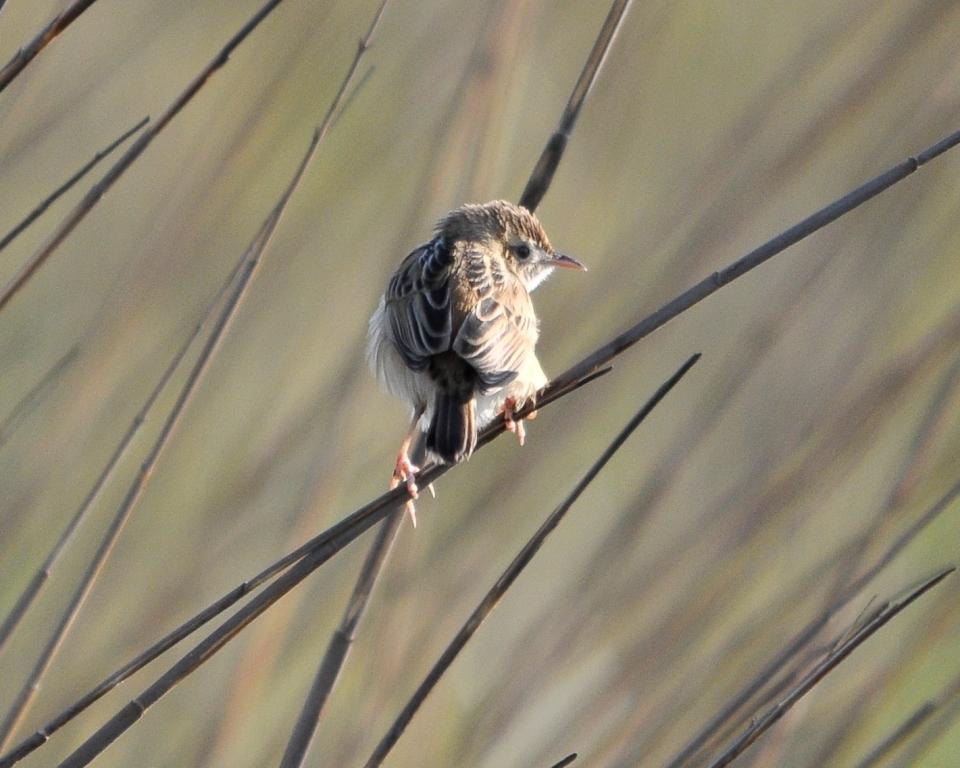
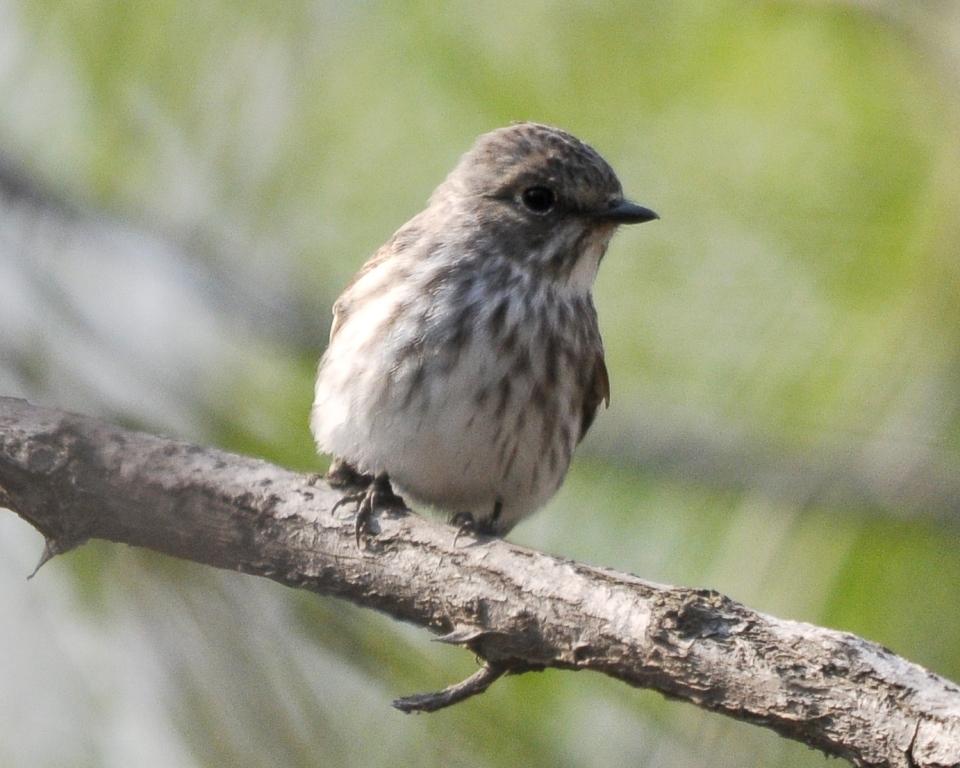
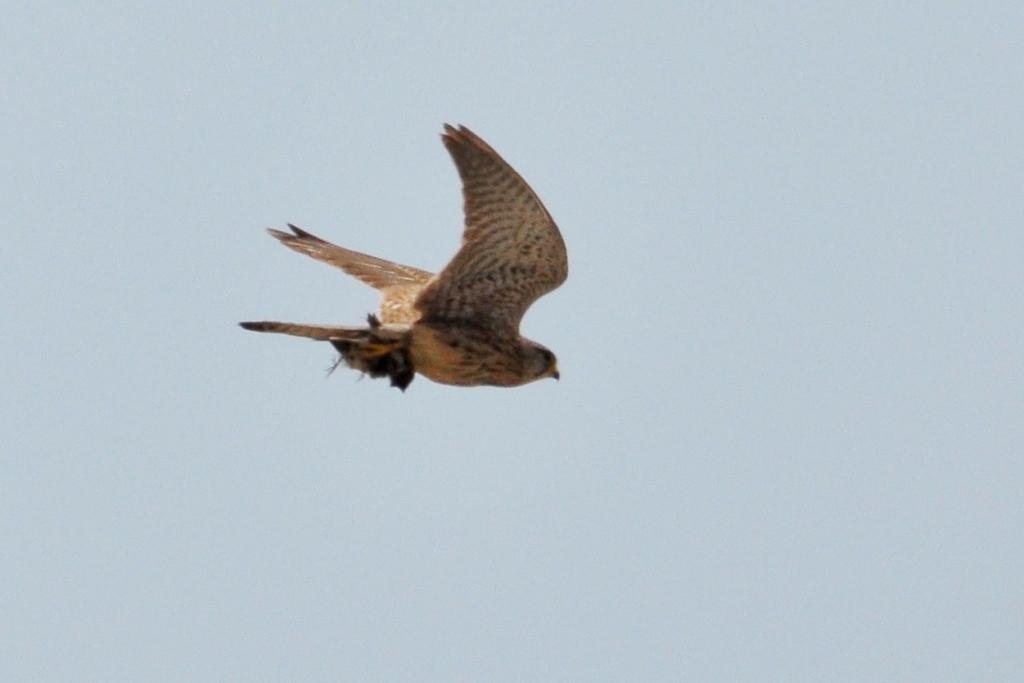
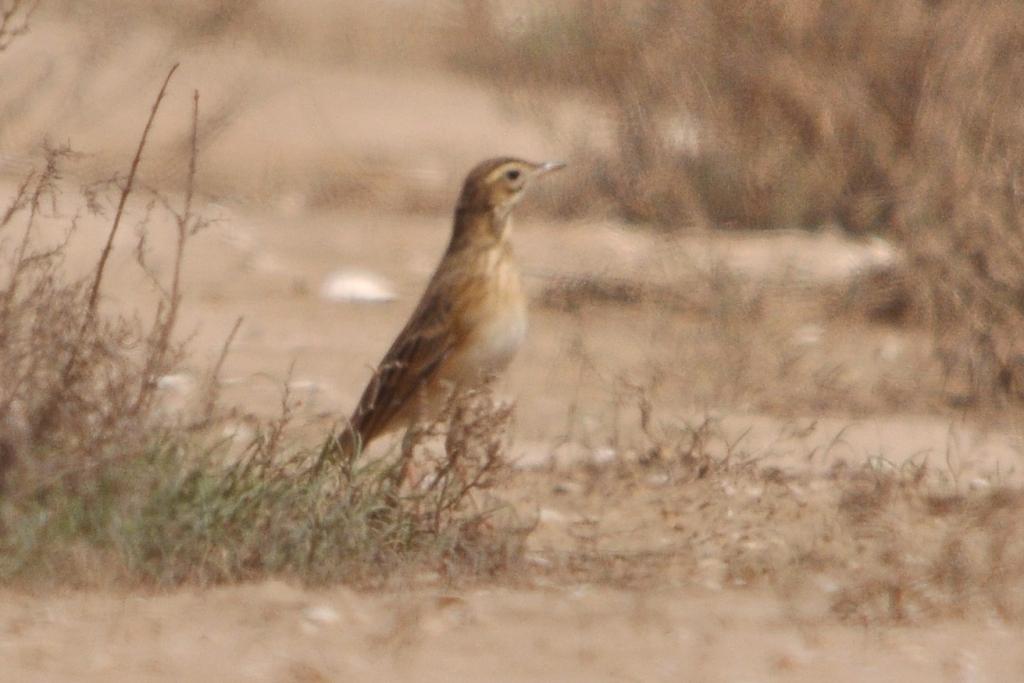
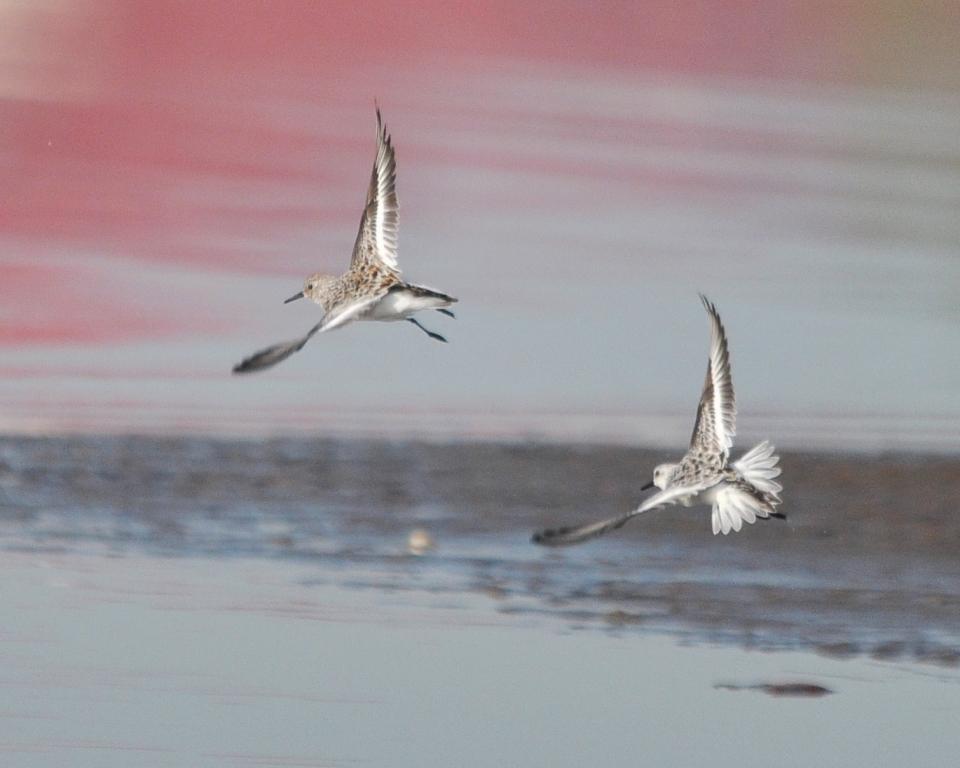

Wednesday, 12th May; Hebei,
Happy Island
Sunny, warm, and a light south-westerly wind all day - ideal conditions for migration. The
contrast between yesterday's paltry offerings could not have been more marked...
There were several hundred birds
of more than 80 species - most had arrived during the night and some continued to arrive during the day.
One of
the best day's birding I've ever experienced.
Here are the highlights in more or less the order I saw them (with
totals for the day):
(Birds I photographed are highlighted. Birds that are numbered
were photographed for the first time this year.)
Grey-streaked Flycatcher c20
Brown Shrike,
c50
Siberian Blue Robin (322), c20
Eurasian Cuckoo (323), 2
Chinese Grosbeak
1
Daurian Starling 2, but not a single okay photo
Japanese Grosbeak (324), 1 in good voice
Arctic
Warbler (325), 1 in full song (the first of 8 species of phylloscopus warblers photographed today)
Eye-browed
Thrush (326), a flock of c50
Hobby, several
Swinhoe's Robin, 1 (poor photo of it, not published)
Dusky
Thrush, c25
Yellow-breasted Bunting (327), 3
Tristram's Bunting, c10
Little Bunting, few
White-throated Rock Thrush (328), 2 males and 1 female
Taiga Flycatcher, c100
Eastern Stonechat,
c200
Elegant Bunting, 3 (group of 2 males and 1 female)
Black-faced Bunting, several
Northern Hawk
Cuckoo (329), 1
Oriental Cuckoo (330), 1
Yellow-browed Warbler, c10
Pallas's Warbler,
few
Radde's Warbler, several
Dusky Warbler (331), several
Brown Flycatcher
(332), c50
Rufous-bellied Woodpecker (333), 2
Mugimaki Flycatcher (334),
3 males and 1 female
Two-barred Greenish Warbler (335), 2
White's Thrush, 2
Siberian Thrush,
2 males (skulking and flight views)
Eastern Crowned Warbler, 2
Yellow-rumped Flycatcher, several
males
Claudia's Warbler, 2 including a confiding bird in West Wood
Little Tern,
c10
Common Tern, several
Grey Plover, c15... with a very distant, long-billed mystery wader
nearby
Redshank, several
Greenshank, c30
Great Knot, a flock of c40
Whimbrel, c30
Curlew, 20
Far
Eastern Curlew, 2
Avocet, 2
Dunlin, c40
Stint sp., 1
Bar-tailed Godwit, c50 (most in full summer plumage)
Richard's Pipit, 2
Eastern Marsh Harrier, several (including two full-on males)
Chinese Bulbul, c30
Common
Sandpipier, few
Pacific Swift, c20
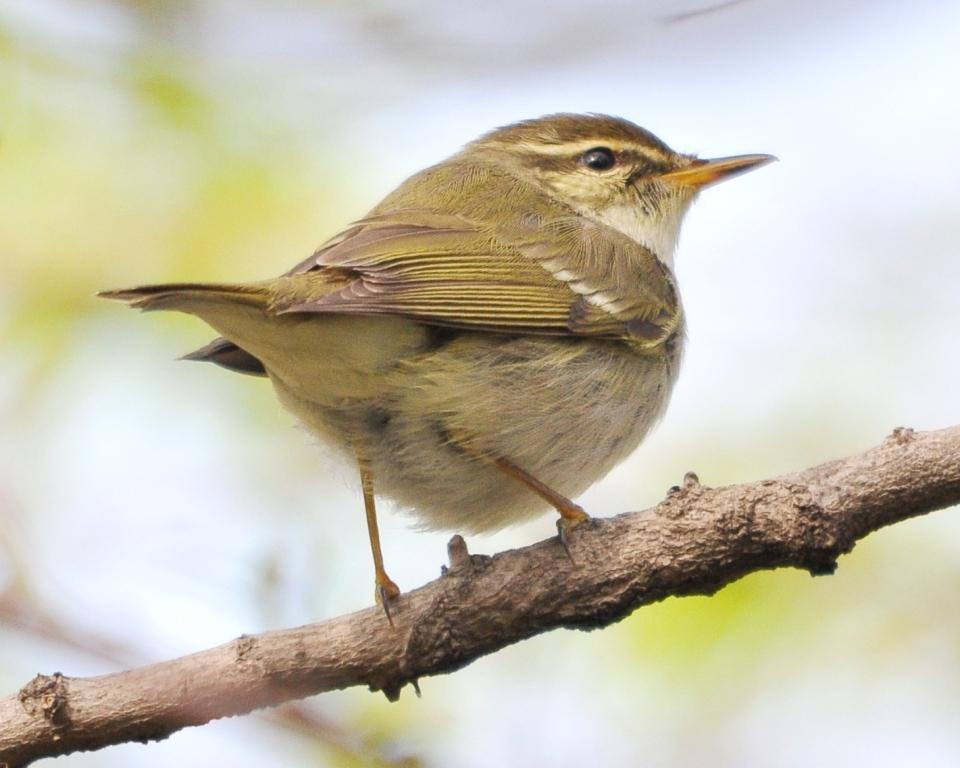
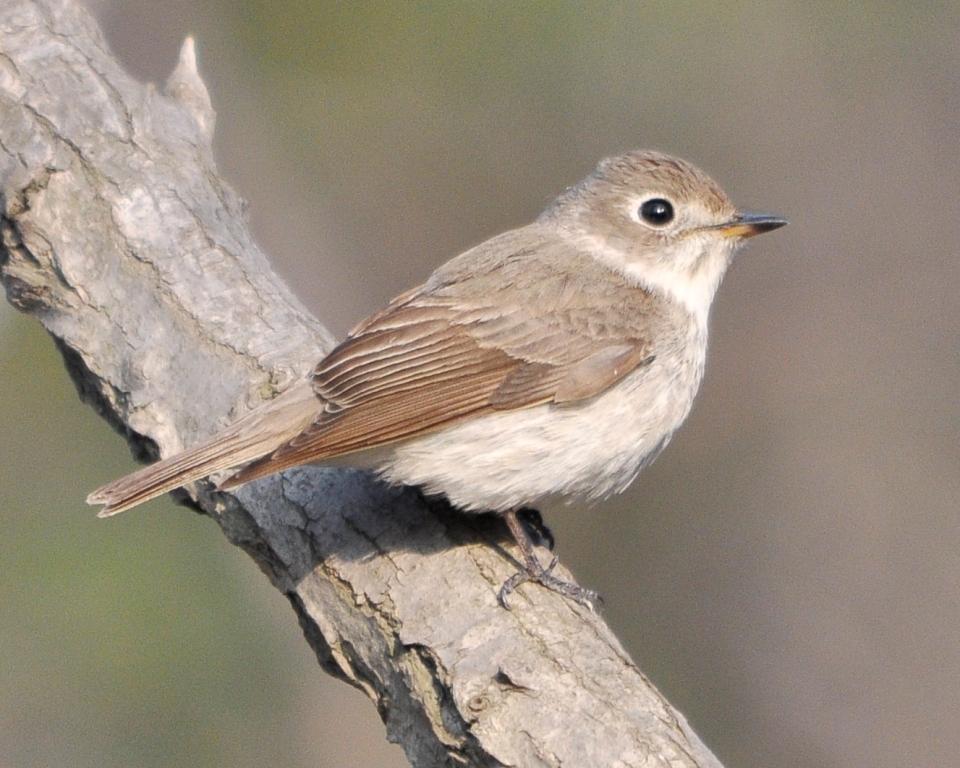
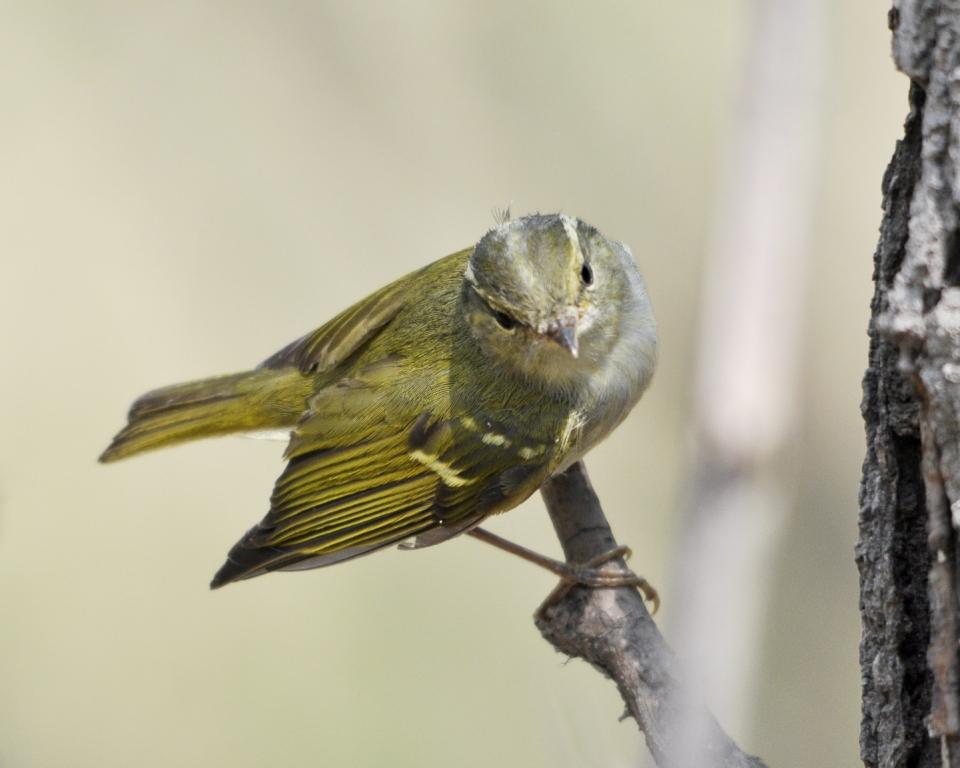
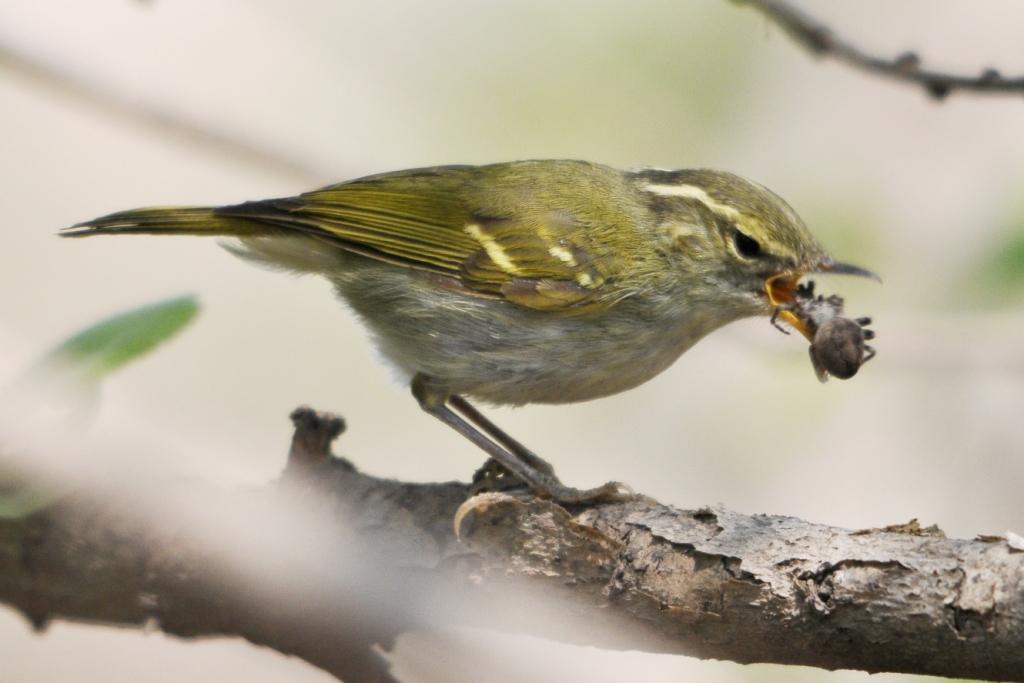
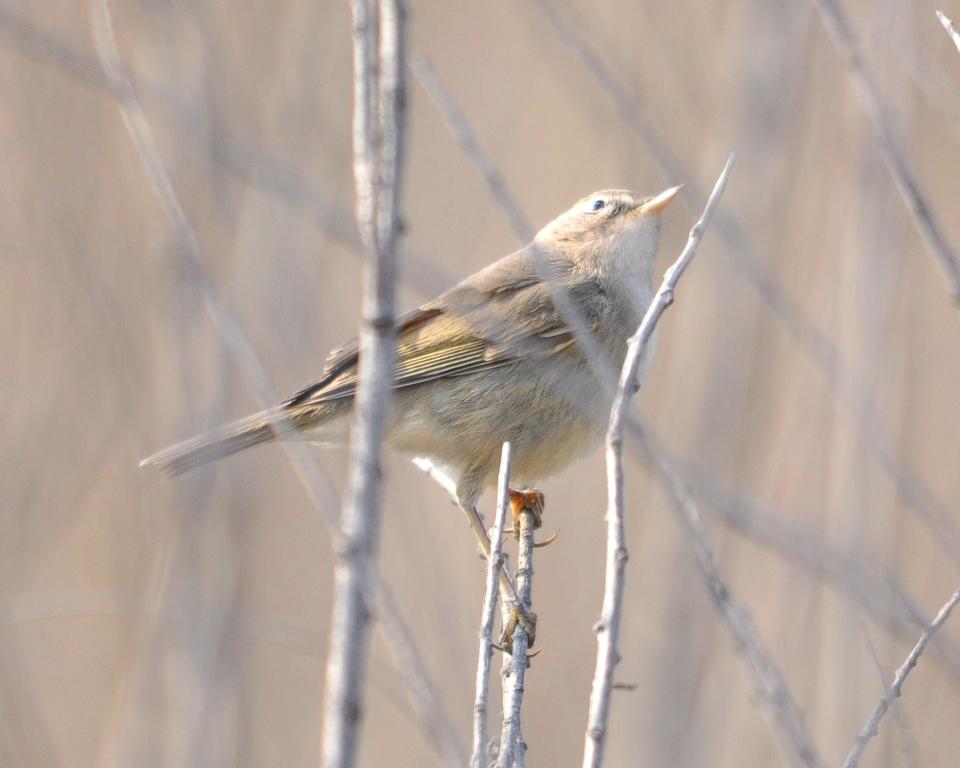
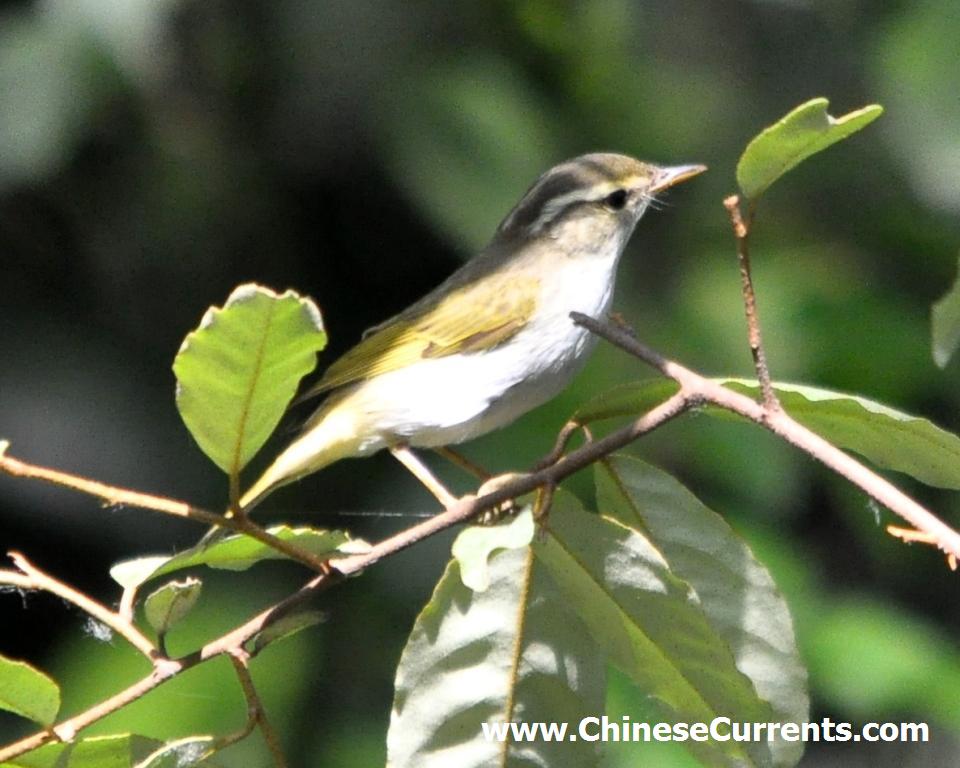
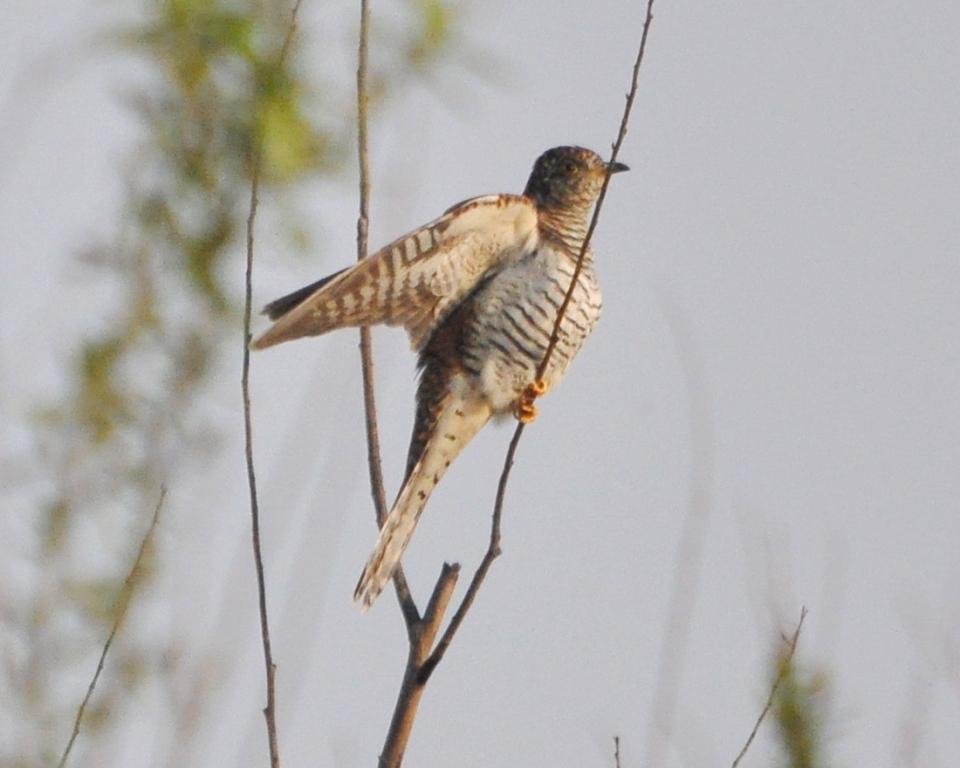
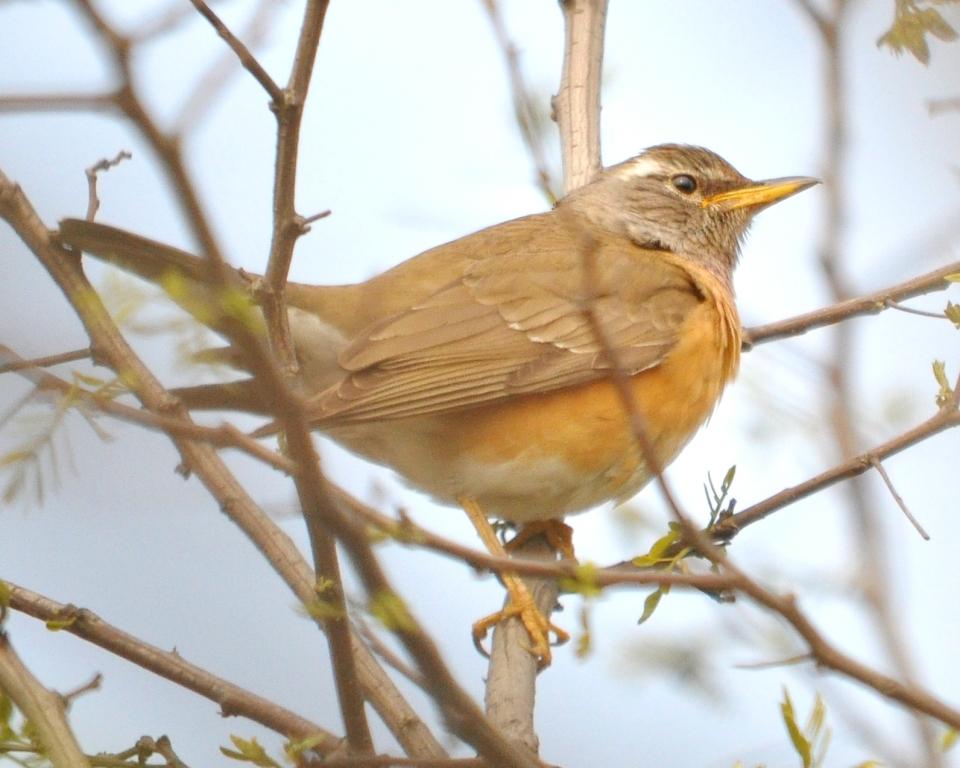
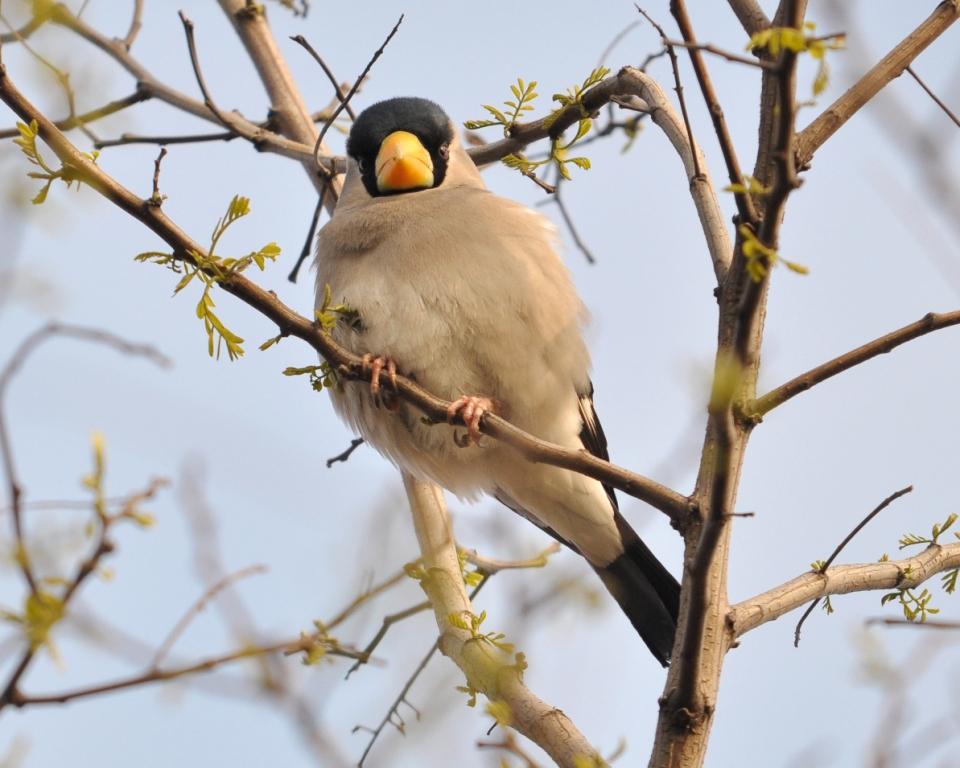
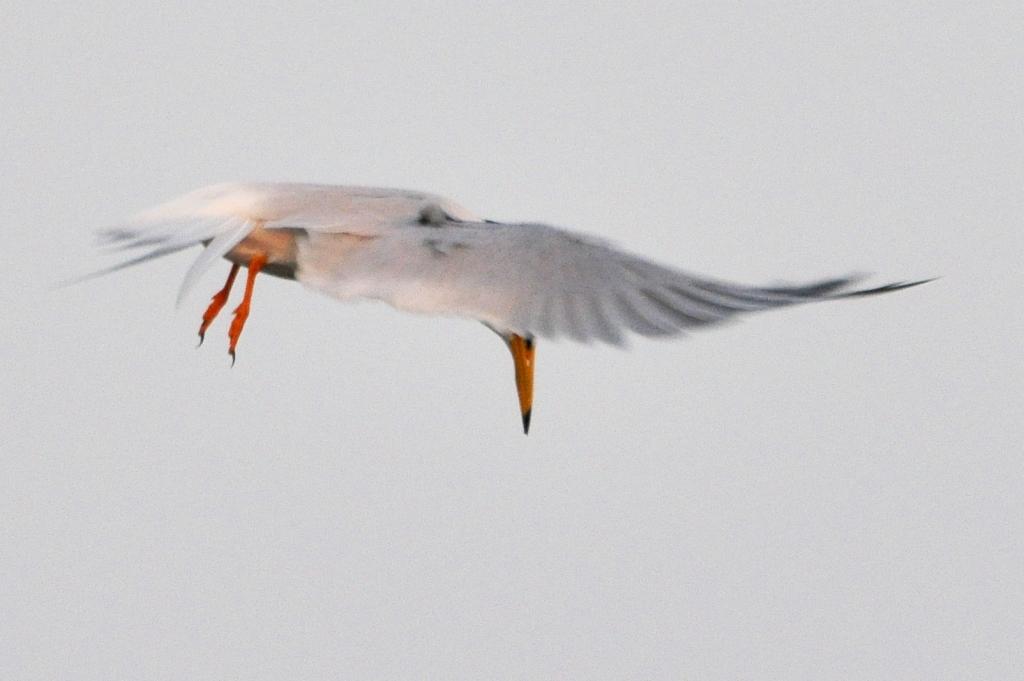

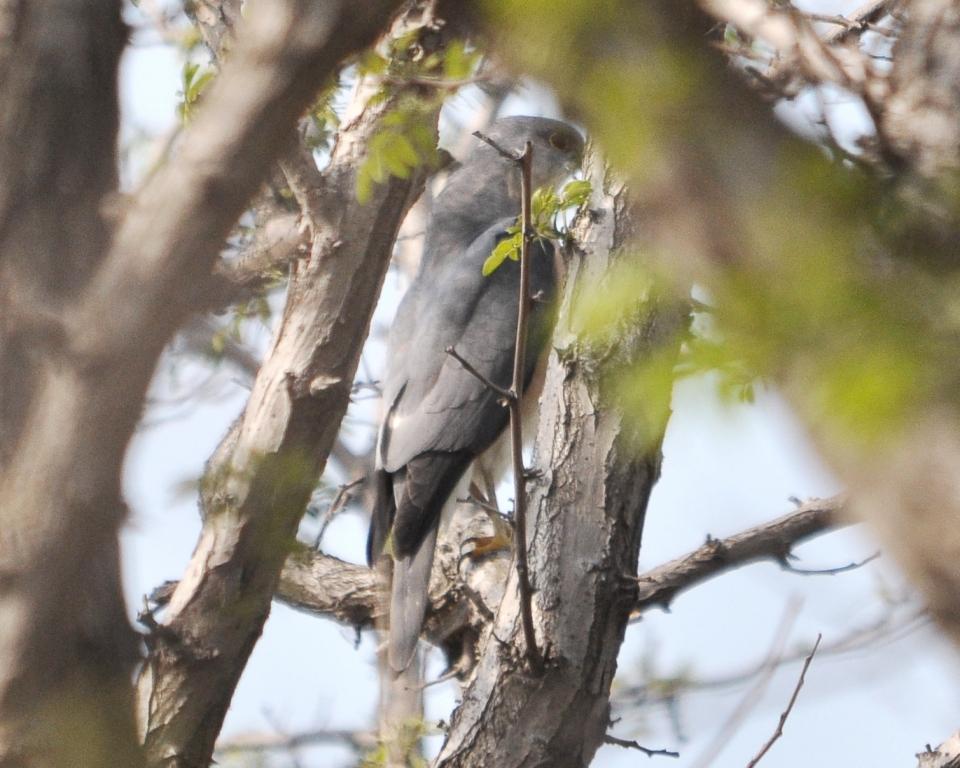
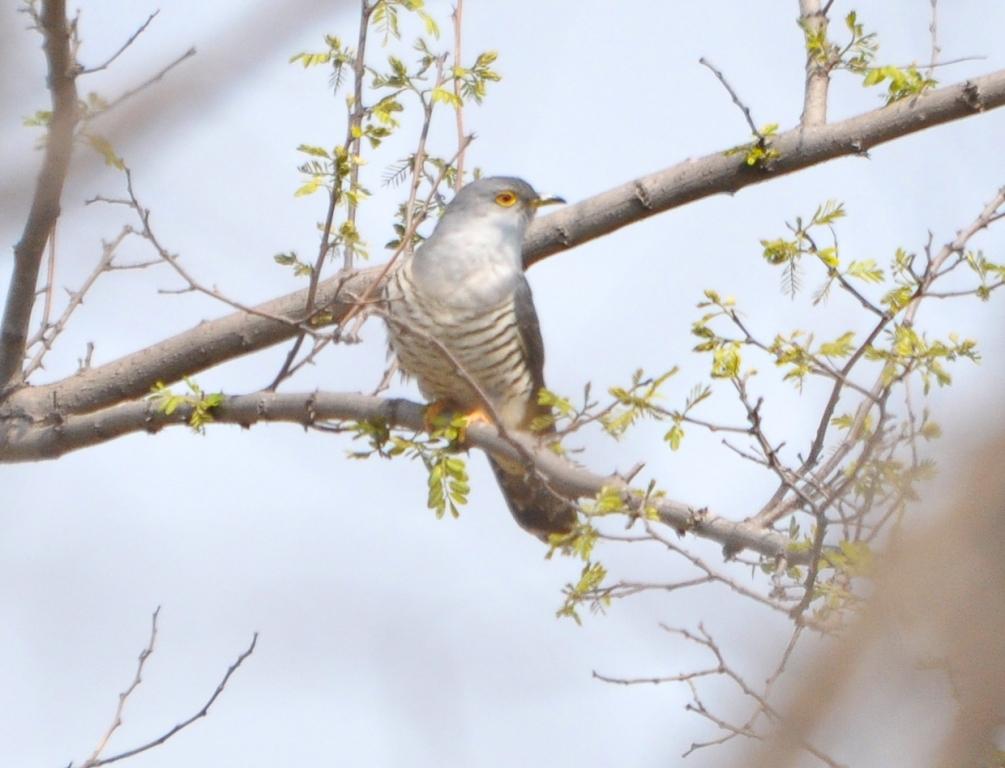
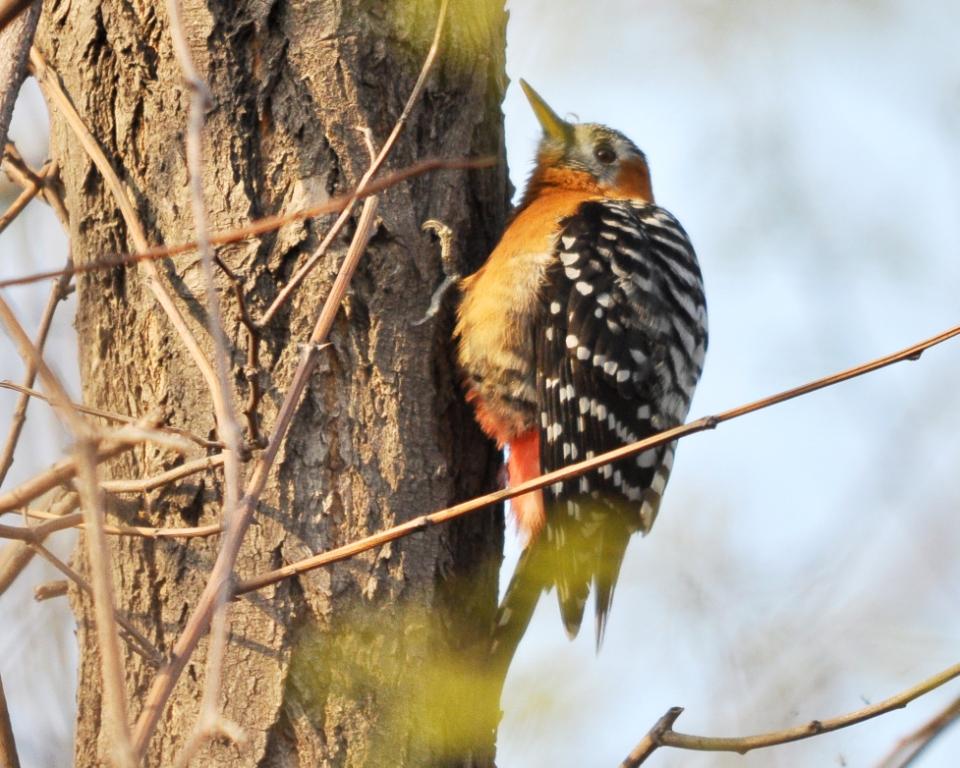
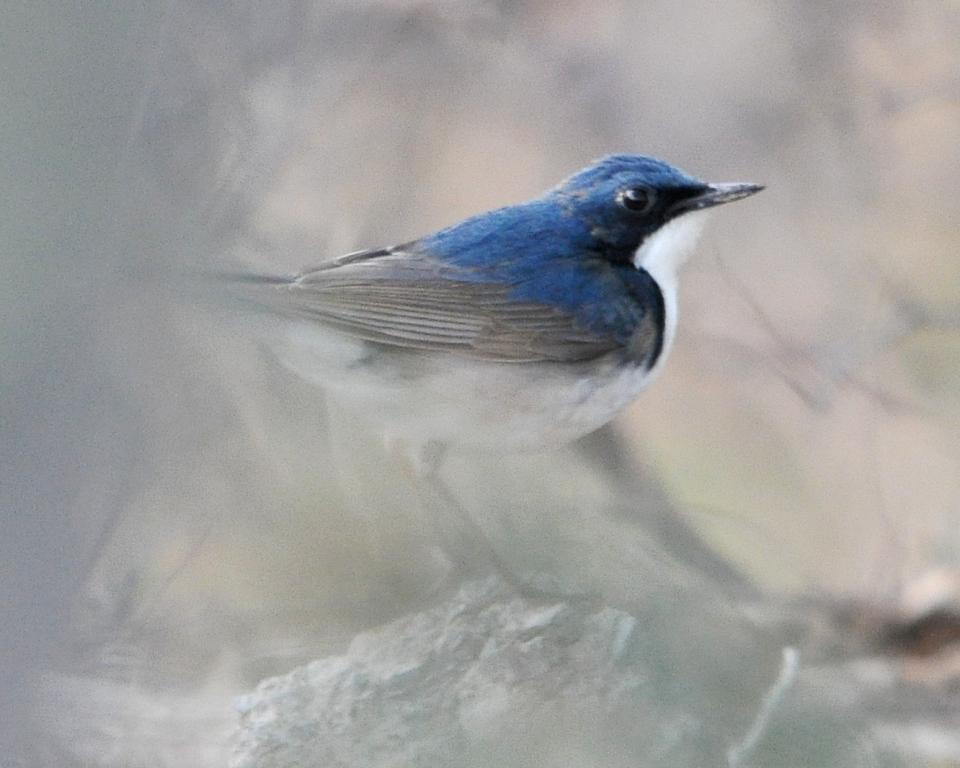
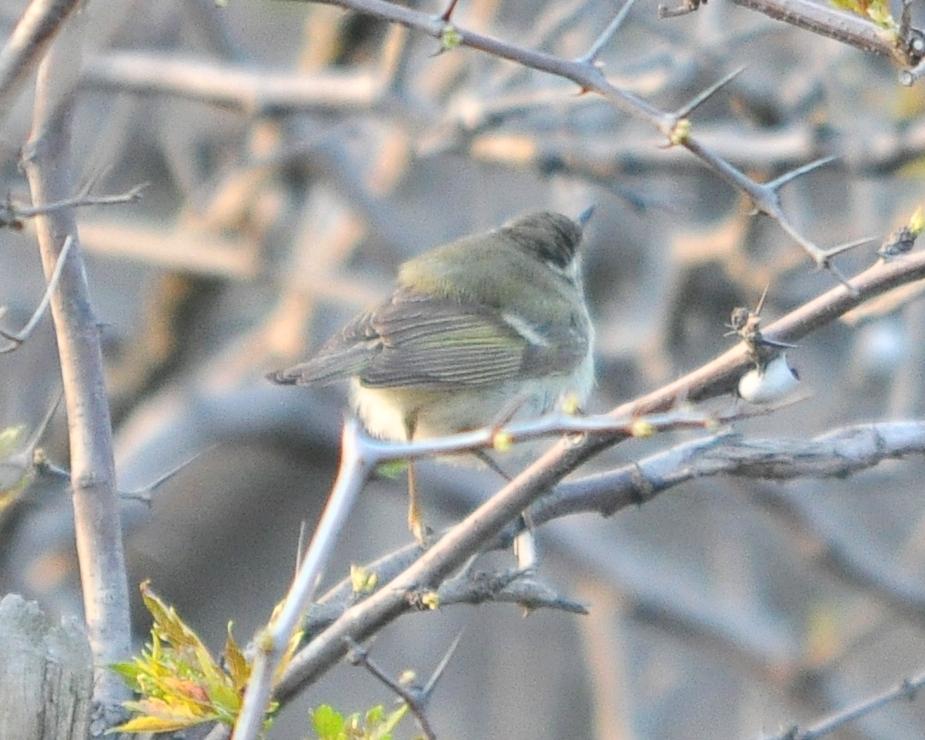
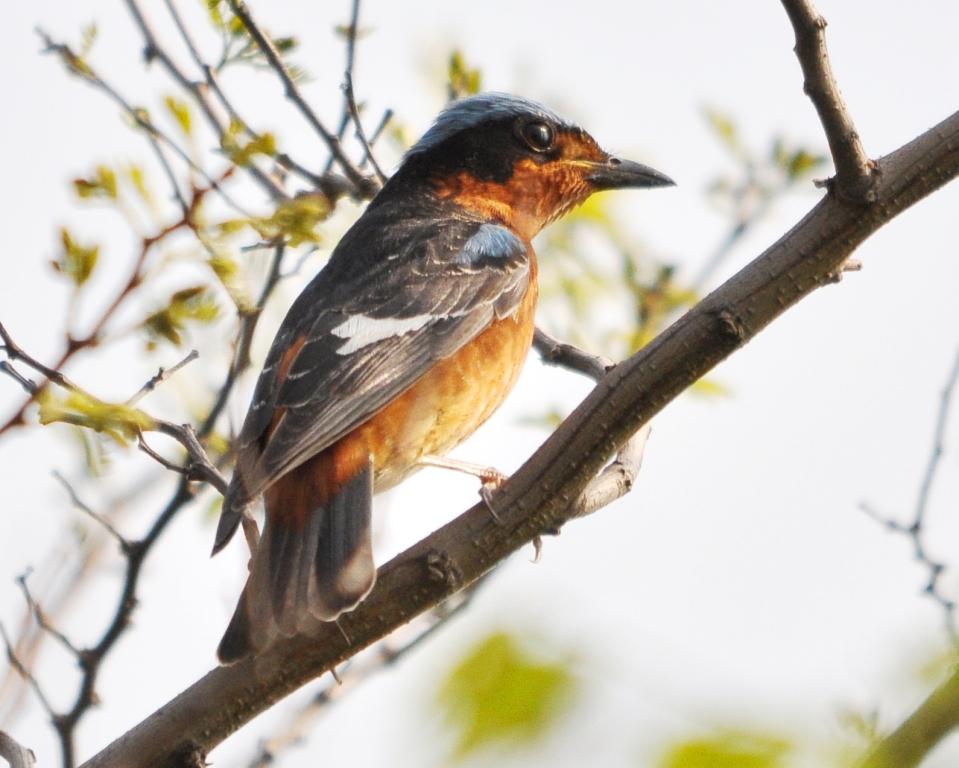
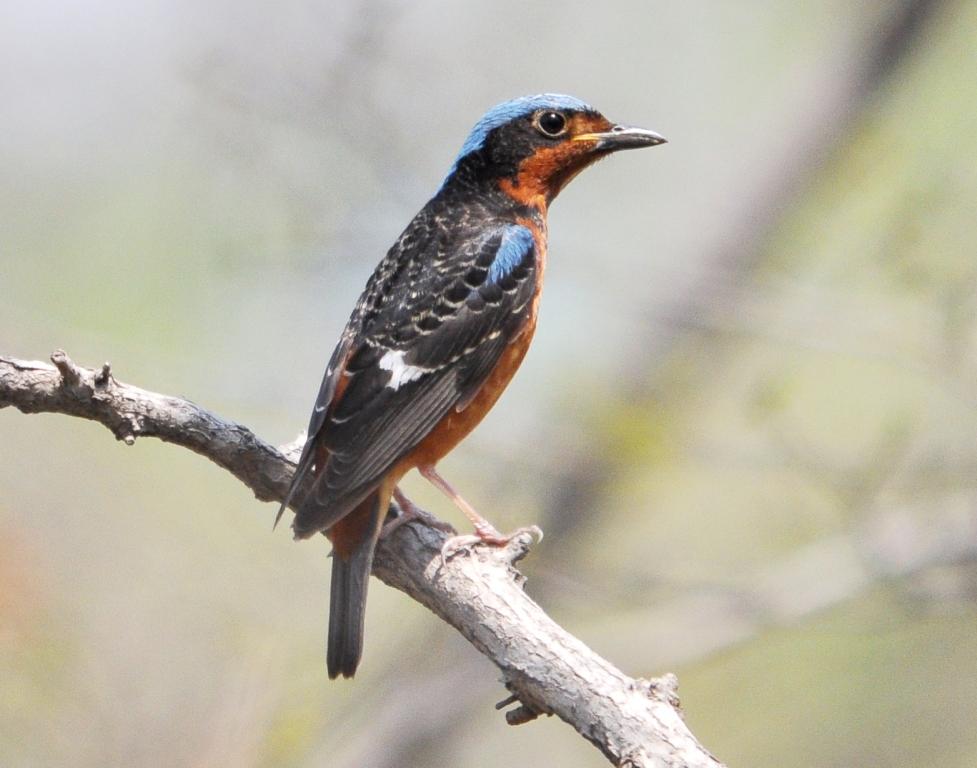
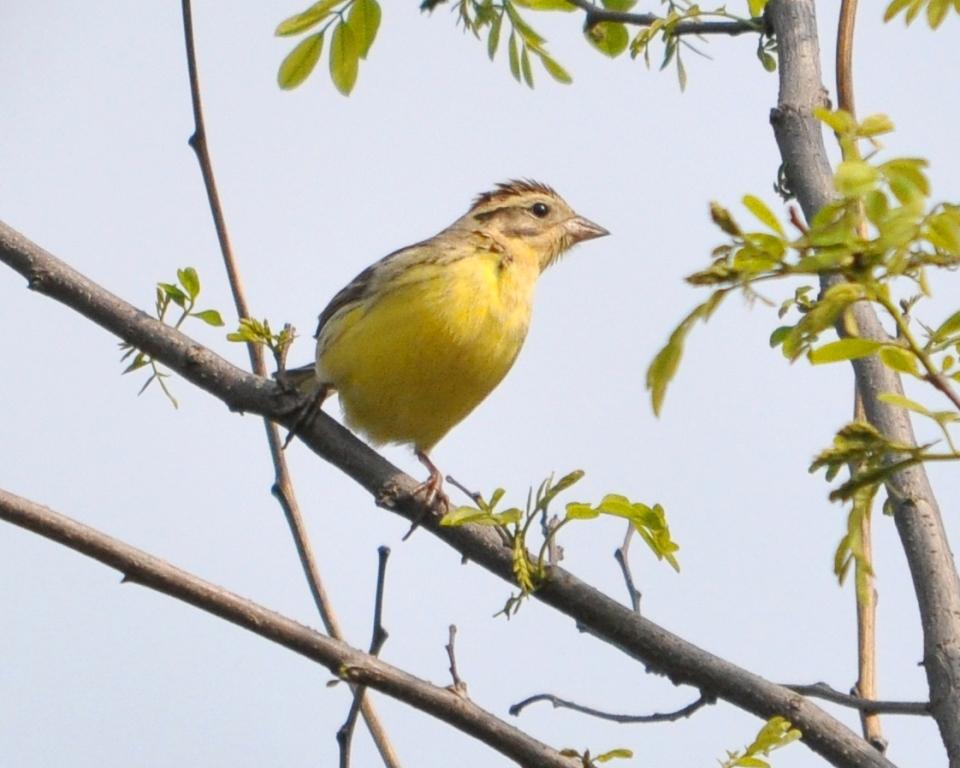
Thursday,
13th May; Hebei, Happy Island
I planned to leave the island at 9.30am, and get back to Beidaihe by 2pm
to catch the train to Beijing, so I was determined to make the most of the little time that remained.
I made an
even earlier start than yesterday - out at 4am and, following a brisk 30 minute walk, I was in the Temple Woods - the scene
of most of yesterday's action.
Even in the half-light it was clear that there were still lots of birds there. There
were several Siberian Blue Robins, including the first female of the year ("only" males yesterday... c20 of them!),
c30 Eye-browed Thrushes, a White's Thrush and a flighty (aren't they all) Siberian Thrush - a female.
Yesterday
I had struggled to get any kind of shot of Daurian Starling, so I was pleased to find one perched on the top of a bush. The
only problem was it was about 5am and what little light there was, was directly behind it. Any adjustment more than 2 stops
is destined to fail, so I put the camera down and picked the binoculars up instead.
On to West Wood, where I had
found a tame Claudia's Warbler yesterday. On the way there, I saw the first of two Chinese Song Thrushes I would see that
morning. I also accidently flushed an Indian Nightjar (failing to get my camera on it as it flew off).
The West
Woods held several male Siberian Rubythroats (new in today), 3 Yellow-browed Buntings and a White's Thrush.
I then saw something just above the skyline flying towards me. My first thoughts were "Woodcock". I
easily managed to put my lens on it as the bird flew level and straight for more than 200 yards - not very Woodcock like with
the benefit of hindsight. Through the viewfinder, though, the heaviness of the bird did nothing to persuade me that it wasn't
a Woodcock. Funnily enough I don't carry my reading glasses with me when I'm birding, so it was difficult to see any detail
when reviewing the images.
After looking at the shots on the computer later that day, I felt sure that the bird
was, in fact, a Swinhoe's Snipe (336) As well as its heavy build and "barrel-chestedness" (vis
a vis Pin-tailed), and its straight flight, it was also flying low over an extensive area of dry grassland. I won't mention
the plumage differences that I think support the identification (as per Brazil) because I am aware that the general consensus
is that Swinhoe's is impossible to identify on plumage characteristics alone.
Interestingly, my only other claimed
Swinhoe's was 8 years ago to the day, in exactly the same place on Happy Island!
Shortly after this encounter,
a friend who was also birding the woods told me that his group had just found an Asian Stubtail. Although tempted (I haven't
seen this species in more than three years), I decided to stick to my self-found mantra and ignored the bird.
But
I couldn't ignore what I saw fly out of the bushes as I was talking to the group of birders... a small owl. Then another.
And another. And yet another. There were owls seemingly everywhere (one person said there were "8", another "10".
I'll stick to "several"). But several of what? Collared Scops Owl, although rare, is theoretically possible (although
a flock of them would be unprecedented). They were of course Oriental Scops Owls (337). I don't use the word
amazing very often, but I can't think of any other word to describe the experience of seeing several Oriental Scops flying
around an area only slightly bigger than a postage stamp.
As I was walking to the boat, the sight of a starling
flying into a bush just in front of me, stopped me in my tracks. After a few minutes, two Daurian Starlings (338)
hopped in to view. The sun, which had been shining brightly for the past two days, bathed them in beautiful light. Amazing!
BTW Little Tern (339)
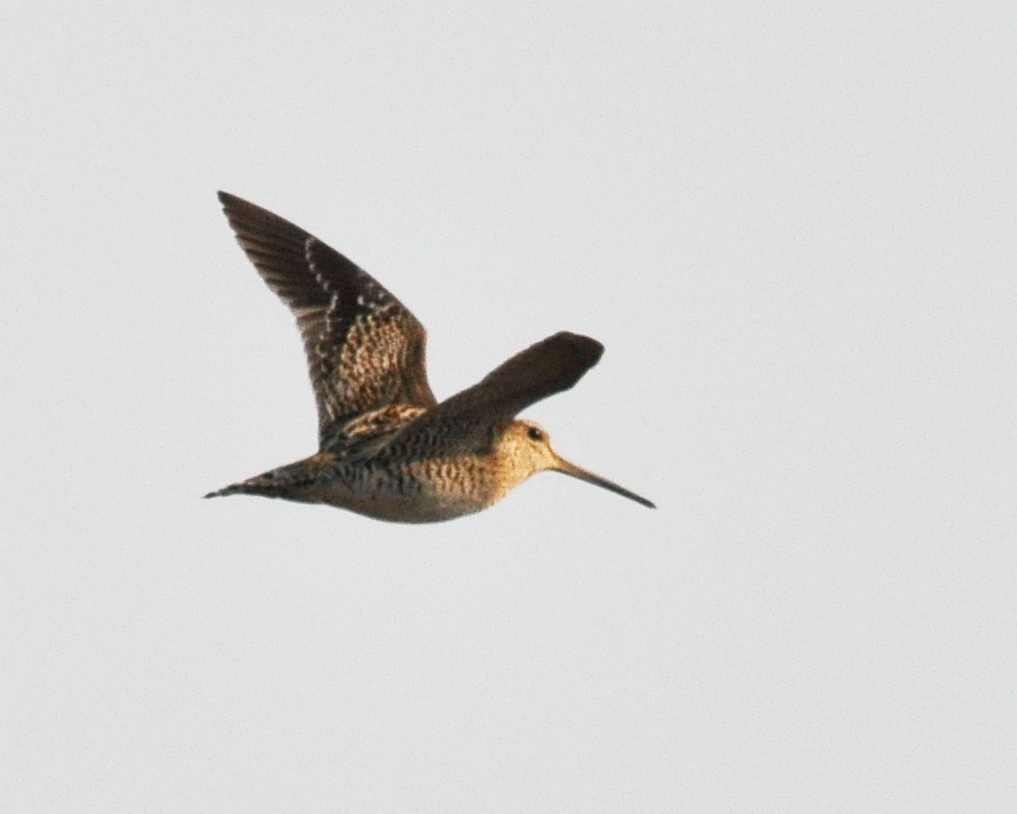
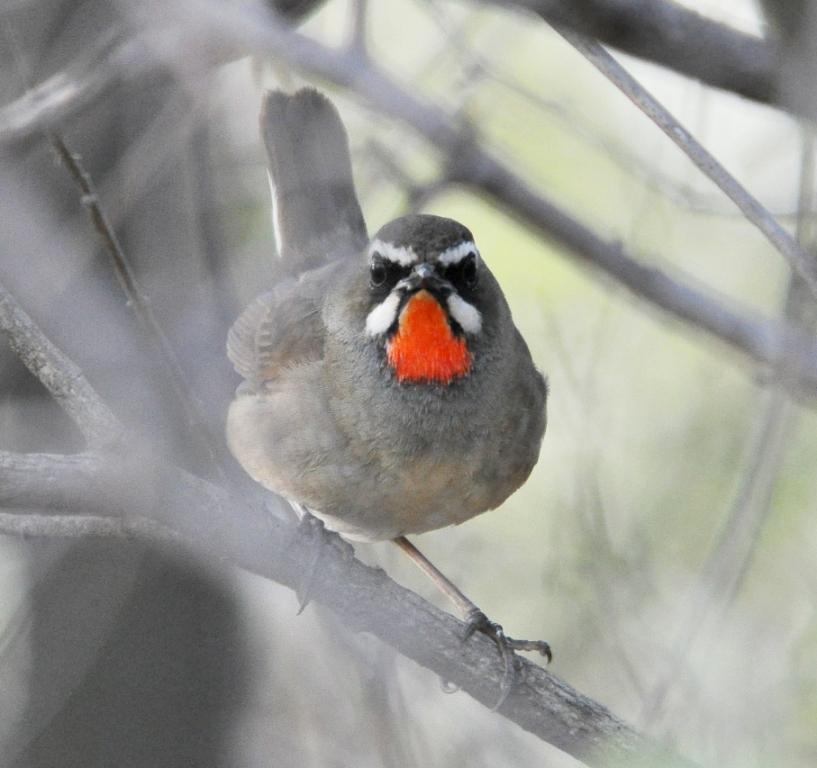
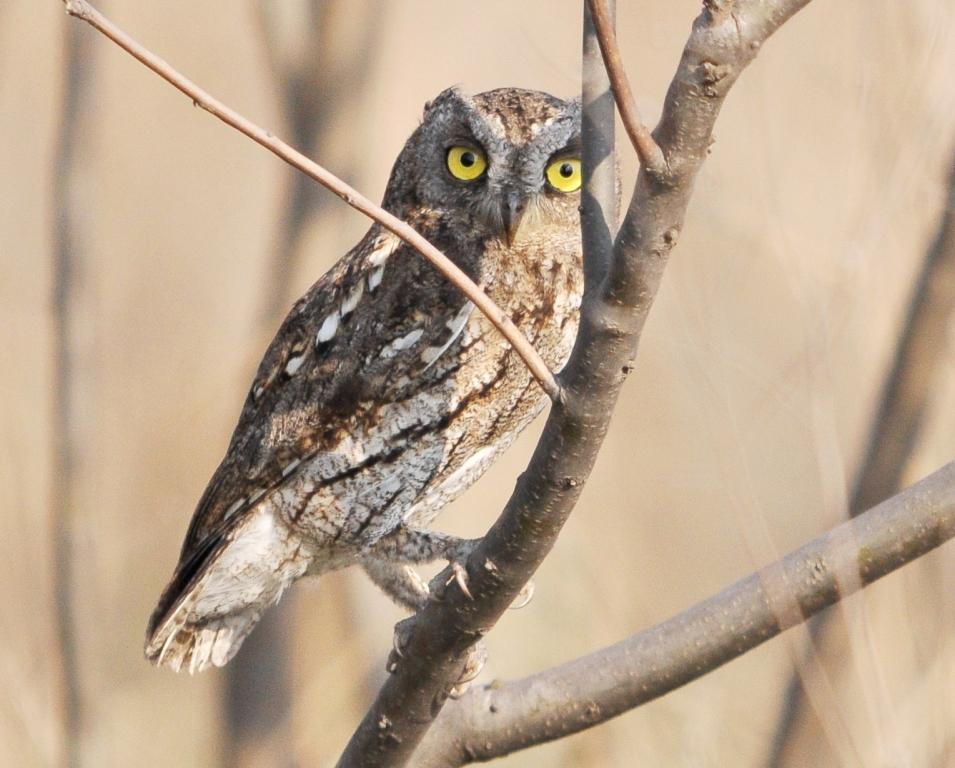
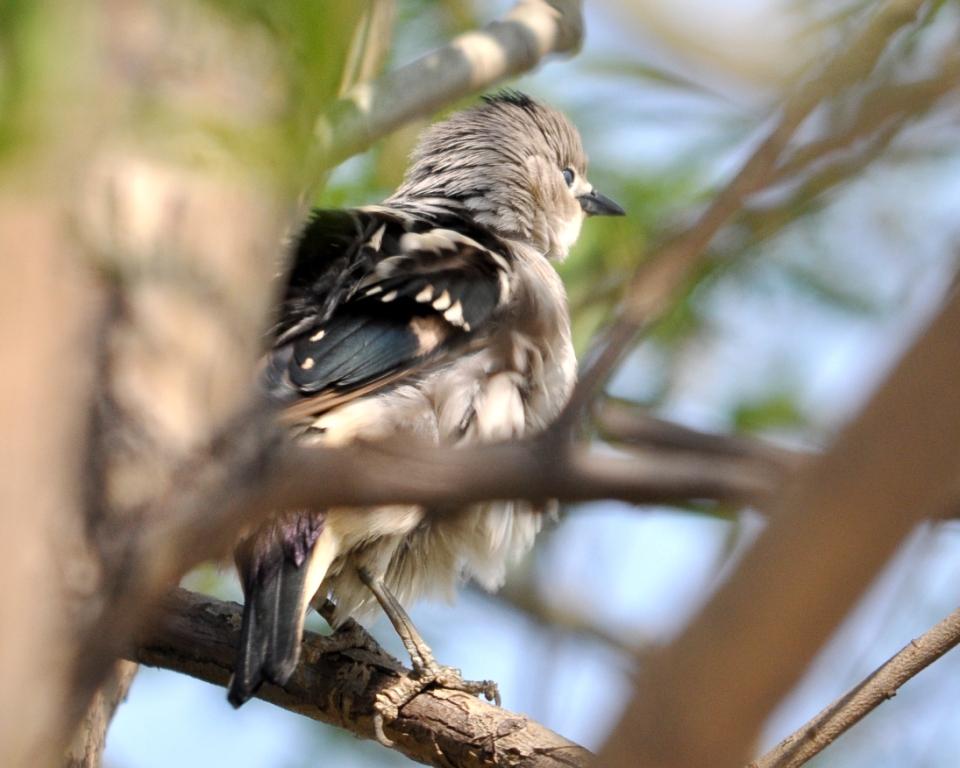
|

